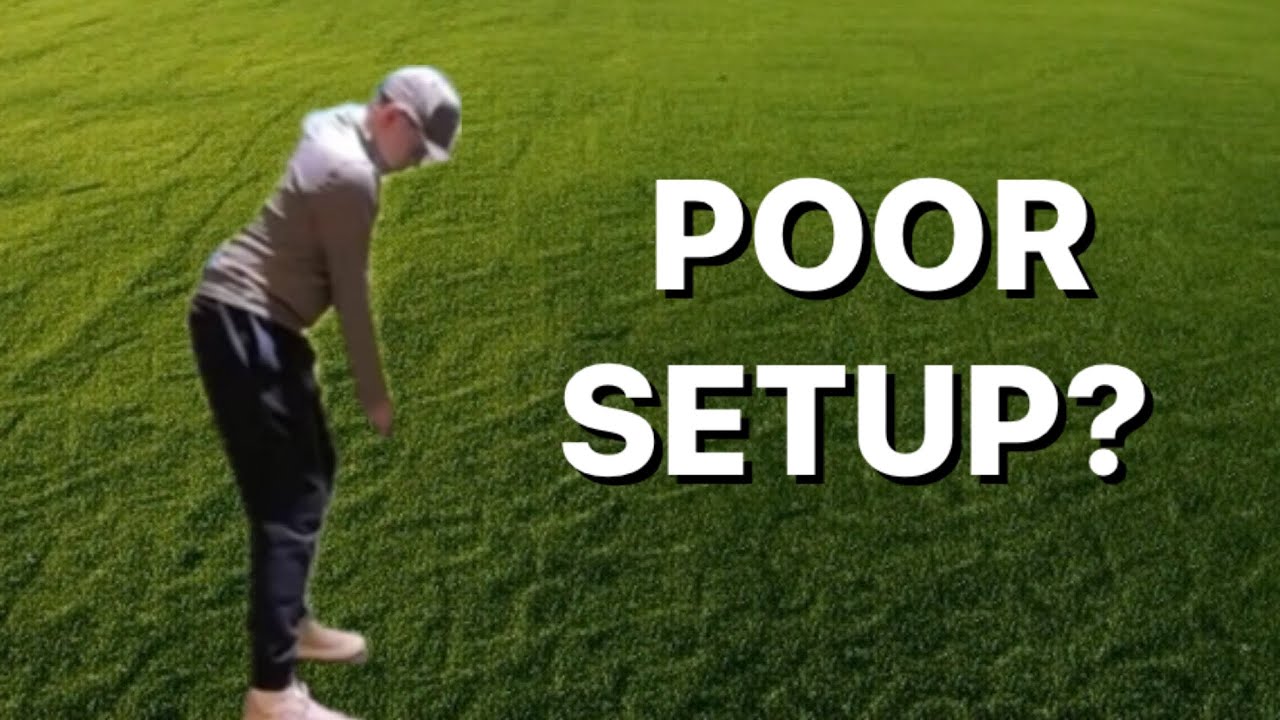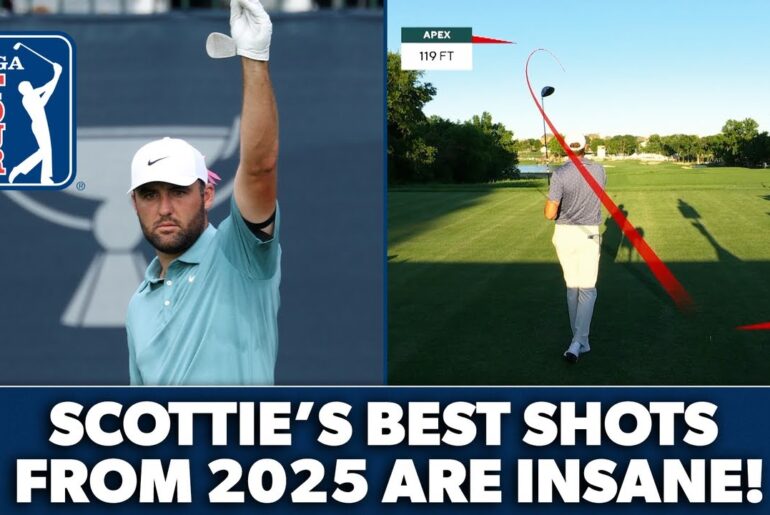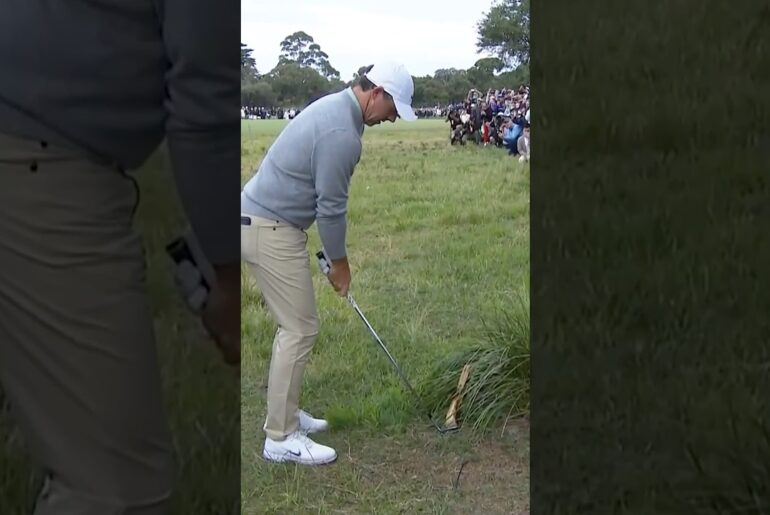This was part of a longer mentorship call where I discussed mechanics with a coach about their students. This clip is specifically about the setup, the role of the pelvis and how you can help yourself prevent injuries long term!
_________________________________
Hello, My name is Shauheen Nakhjavani, Co-founder of Nakhjavani Golf. I have been a golf coach for 10+ years, I’ve given over 25,000 lessons in-person & online, and I have worked with many professional players; including Kevin Chappell, Stephen Ames, Darren Clarke, Calum Hill, Yannik Paul, Eddie Pepperell, Jeremy Paul & many others!
If you want to learn more about my style of coaching, you can find more instruction here:
➡️ Instagram: https://instagram.com/shkeengolf
➡️ Instagram: https://instagram.com/nakhjavanigolf
➡️ Twitter: https://twitter.com/shkeengolf
🏌️♂️ SIGN UP FOR ONLINE GOLF LESSONS here: https://apps.apple.com/ca/app/snead-online-golf-coaching/id6452275983
relates back to the extremes that I’m talking about is I don’t like the actual position of his pelvis. Okay. So, the thing that will show that for me, and you’ll see it here, is you see this little like concave look in his lower back. It’s a little bit like pushed in. Mhm. If ever you’ve seen a lot of like old school Golf Digest information of like stick the ass out in your setup position. So, everybody’s been told to do that at some point in time. You might have been told that. I certainly was. As soon as you get the rear end pushing too far behind you, what happens often times is my pelvis, let’s say like these are my hips, like this is the back of my pelvis and this is the front, it starts to get inclined too far this way, which what that basically means is the back of the pelvis gets too high and the front end gets too low. And when you when you create that tilt, you’ll see that concave look on the lower back. So if you just if you just stand there like if I just stood here and I tried to do it, let me just get rid of the blur here. Apologies. I just realized I have a blurred background. So, if I stand here and I do that, what that basically means is I’m doing too much of this position here. So, you see how like the front end of my pelvis is really lowering and the back end is getting really really high. And then if you look at my lower back, I’ll start to create a little bit of a bend in this area. Okay. Okay. Okay. Number one, that puts a ton of pressure on your lower body and your lower back that personally I have a herniated disc and the L5S1 on my spine in part because of stupidities like that that I didn’t like when I was younger. So when you’re working with someone on their setup and I refer to putting out fires, part of the fires I’m referring to is also your health. This game is made to be played until you’re 60, 70, 80 years old, unlike other sports, right? I used to play competitive soccer. I can’t do that anymore cuz that’s a sport that you just can’t play when you’re older. too hard on the body. Golf is that’s not the case. So, we want to try to make sure that the golfer is not going to take a beating with their body long term. It’s easy to say he’s a junior, he’s not going to feel it right now, but like trust me, like swinging like this for 20 years, he’ll start to feel it at some point for sure, right? So, I typically don’t like the pelvis in that position because of number one, the pressure it puts on the lower back. And number two, because of that pressure, it makes it hard to rotate easily because you’re going to feel a tightness or a strain. Okay? We’re built as humans not to feel pressure. As soon as we feel any sort of tension, you’re just going to stop forcing that movement, right? It’s only normal. So, I would tell a player like this to tuck their pelvis more under them, not stick the ass out, but to actually do the opposite. And that would create a little bit of a rounding to the lower back. And I’ll show you a visual of a student who has gone through a change similar to that type. And I will, this is Stephen Ames who plays on the Champions Tour. and as he gets older obviously is going to have limitations on his body like everybody else. So this would be the position I didn’t like. So you would see a little bit more of the concave look in his lower back. You would see the back of his pelvis very high, front end very low. Mhm. And this would be the opposite where you can kind of see his pelvis is tucked more underneath his stomach a little bit more. It’s not so far behind him and his shirt is kind of flapping in the wind here, but you’re trying to round out that lower back as much as possible. Okay. Okay, that makes sense. It typically gets it’s typically gets paired with standing a little taller as well because obviously when your pelvis comes underneath you, you need space. Your your chest is going to kind of get a little bit higher. So when I’m analyzing a setup position and I’m analyzing balance, one of the things I’m looking at is exactly that position. So you can see the difference in the pelvis here from one to the other and how far back behind him this one is. You see that like concave look there, right? Mhm. So that would be one of the main components I’m looking at with every student. Ideally, I’m trying to avoid this position. For whatever reason, it does not work. It creates a lot of tension. It’s never really been a good thing. The second thing I will look at, and I should be able to draw a line on this photo here, is when I’m looking at balance, I’m usually trying to look at where does the chest line up with the where does the upper body, lower body, and the feet line up in relation to each other. Okay? So, what that means is I want to make sure that their armpit line, so that would be kind of like where I’m drawing this line out, lines up with the kneecaps and lines up just after the flat spot on the foot. The reason I like those three particular things, and I’ll send you the recording of this after so you can rewatch this as many times as you want if you miss something. Okay? The reason I like those things lining up is because typically if those three pieces line up, I’m rarely going to get a golfer whose upper body gets too far out over their toes or the pelvis is getting too far back or they have too much knee bend, which gets them way too squatty and low to the ground. It just gets all of those extremes pretty much tightened up to where it’s almost a guarantee they’re going to be in a balanced position every time. Okay? And you’ll see with most highle players, you’ll start to notice those pieces line up pretty comfortably on a lot of golfers. So, if I were to take that exact setup with this player, two things are going to happen. Number one, the armpit line is not going to line up with the kneecaps because the kneecaps are too flexed. And the kneecaps get too flexed as the pelvis pushes back behind him and gets very squatty. So all of a sudden if he tucked his pelvis more under him and he got a little taller, he by default would have a little bit less knee flex. You just fixed lower back pain longterm and you fix the balance in his setup and you’re like, “Okay, now I know his setup is not creating any sort of extreme issues. We’re good with it. I don’t have to stress about it anymore in the future.” And then it’s just m maintenance work at that point. Okay. Okay.







